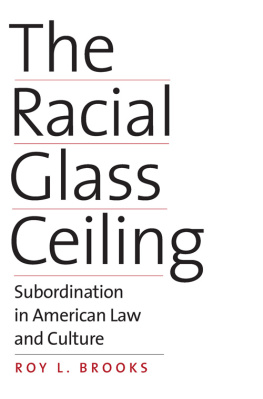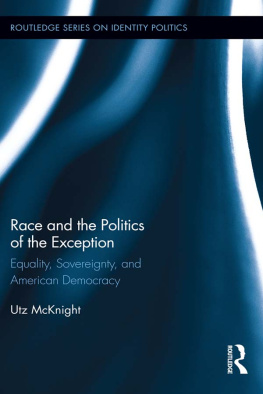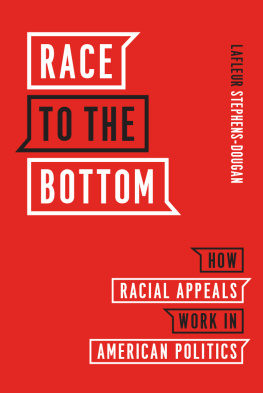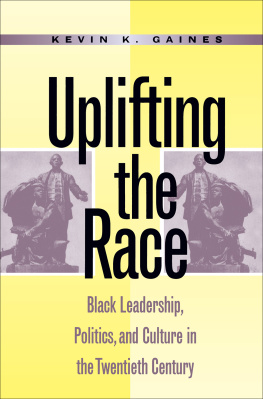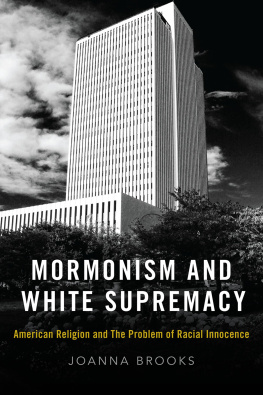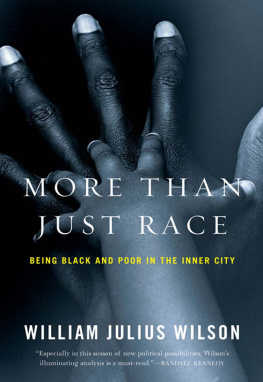The Racial
Glass Ceiling

Published with assistance from the
Mary Cady Tew Memorial Fund.
Copyright 2017 by Roy L. Brooks.
All rights reserved. This book may not be reproduced, in whole
or in part, including illustrations, in any form (beyond that
copying permitted by Sections 107 and 108 of the U.S.
Copyright Law and except by reviewers for the public press),
without written permission from the publishers.
Yale University Press books may be purchased in quantity for
educational, business, or promotional use. For information,
please e-mail
(U.K. office).
Set in Minion type by IDS Infotech, Ltd.
Printed in the United States of America.
Library of Congress Control Number: 2016954830
ISBN 978-0-300-22330-9 (cloth : alk. paper)
A catalogue record for this book is available from the British
Library.
This paper meets the requirements of ANSI/NISO Z39.48-1992
(Permanence of Paper).
10 9 8 7 6 5 4 3 2 1
For James A. Thomas
Contents
INTRODUCTION : A New Understanding of
Racial Subordination
FOUR Cultural Subordination Through
Cultural Diversity
Appendix B: PostCivil Rights Cases That
Impede Racial Progress
Preface
S ince the end of the civil rights period, the problem of racial inequality in the United States has largely been defined as a socioeconomic problem. Racial disparity in education, jobs, and income is seen as the primary indicator of racial inequality faced by African Americans, or blacks, in particular. While there is little disagreement in naming the race problem today, there is major disagreement in understanding what sustains the problem long after the end of the Jim Crow era. This disagreement breaks along political lines, with progressives arguing that the race problem, so defined, is sustained by racism, and with conservatives just as adamantly insisting that it is maintained by bad behaviors and values among blacks. But when I study the problem of black inequality postJim Crow, I see a more complex problem.
More than a socioeconomic problem, more than a problem that largely affects poor blacks, more than racism, more than a supposedly dysfunctional class of blacks, I see a three-headed hydra when I look at the problem of black inequality. I see a socioeconomic, socio-legal, and sociocultural race problem, with the latter two manifested largely as racial subordination.
By racial subordination, I mean the act of impeding racial progress in pursuit of legitimate, nonracist interests. The race problem in law, as I see it, is due less to a racist Supreme Court than to a racially subordinating Court, and the problem in the American culture writ large is racial subordination as well as racism. In moving the discussion from discrimination discourse to subordination discourse, and in focusing on law and culture, I hope to further our understanding of a problemblack inequality in postJim Crow Americathat has preoccupied the hearts and minds of scholars, pundits, policy-makers, and other concerned Americans. Interest in this problem has intensified with the election and reelection of a black president of the United States, and with a new round of racial discord over police encounters with African Americans.
Subordination discourse also affords us an opportunity to arrive at solutions to these unexplored aspects of the race problemsocio-legal and socioculturalbased on good social policy harvested on common ground. In the end, the success of any prescription for the race problem will depend, in my view, on our ability to engage each other with concern rather than fearconcern for what is right for others right in front of us.
Acknowledgments
I am deeply indebted to Perla Bleisch, my secretary for more than twenty years, and to several teams of research assistants who worked on the book at various times. Special thanks to Kevin Alexander, Mohammed Aly, Muna Amadi, Christina Buckley, Matthew Burgess, Claude Durden, Shannon Finley, Susan Gathman, Jarvis Lagman, Xiaowan Mao, Ariane Lisa Pan, Amalea Romero, Mellania Safarian, Kelly Smith, Benjamin White, and Heather Zak. My distinguished colleagues Judith Liu (sociology), Carlton Floyd (English), and Karen Teel (theology) read some of the chapters and offered priceless suggestions, as did my former student Jon Bialecki, who has become an extraordinarily gifted scholar. Wayne Shannon has been an irreplaceable source of wisdom and support for my entire professional life. Jaya Aninda Chatterjee, my editor at Yale University Press, was simply superb and a great pleasure to work with. Thanks also to Kate Davis, who did a first-rate job on the manuscript.
The Racial
Glass Ceiling
I N T R O D U C T I O N
A New Understanding of
Racial Subordination
T wo billionaire owners of NBA teams. One, Donald Sterling, eighty-one-year-old owner of the L.A. Clippers, is recorded in a private conversation reproaching his thirty-one-year-old Latina assistant/girlfriend, V. Stiviano, for associating in public with African Americans, or blacks. He scolds her most severely for taking a picture with basketball Hall-of-Famer Earvin Magic Johnson and posting it to her Instagram account. In addition, he repeatedly depicts African Americans as racially inferior and implores Stiviano not to bring them to my games. After an audiotape of these racist remarks was leaked to the press, several corporate sponsors withdrew from the Clippers, and players throughout the league threatened to boycott the games if Sterling remained an owner or associated with the team in any fashion. In response to these events, the NBA commissioner, Adam Silver, barred Sterling from associating with any NBA team in any capacity and fined him $2.5 million, the maximum allowed under the NBA rules. In addition, the commissioner asked the other NBA owners to force Sterling to sell his team.
Although the team was eventually sold by Sterlings wife (for $2 billion, yielding a very handsome profit), before the owners could vote on the matter, Mark Cuban, the billionaire owner of the Dallas Mavericks franchise, publicly announced that while he found Donald Sterlings racism to be abhorrent, he did not support the idea of forcing him to sell
This was a revelatory moment for me. Not Donald Sterlings racismas an African American I take that as a given in our societybut Mark Cubans candor in expressing a racial mind-set that I had long known existed but up to then had misunderstood, as had so many other civil rights scholars, as racism. Cubans mind-set and concomitant actions add a dimension to the problem of race in postcivil rights America (the period since the end of the civil rights movement and the Jim Crow era, circa 1972) that has not been fully studied, if studied at all, in academic circles or discussed in the public arena. His position helps us understand why racial equality continues to elude even socioeconomically successful African Americans, including a black president of the United States.
In this book, I use the Cubanian mind-set as a springboard for making three principal points. First, although Sterling is a racist, as conventionally defined, Cuban is not; he is a racial subordinator, as defined in this book. Second, racial subordination hurts African Americans and society as a whole because it stands in the path of racial justice, thereby creating a racial glass ceiling. Doing nothing about racial subordination is bad social policy. Third, the American race problem in postcivil rights America is more than a socioeconomic problem, more than a problem that largely affects poor blacks. When I look at the race problem today and going forward, I see a three-headed hydra consisting of a socioeconomic race problem, a socio-legal race problem, and a sociocultural race problem, the latter two reaching all blacks, including the wealthy. The problem in law is manifested less by racism than by racial subordinationwhat can be called
Next page
